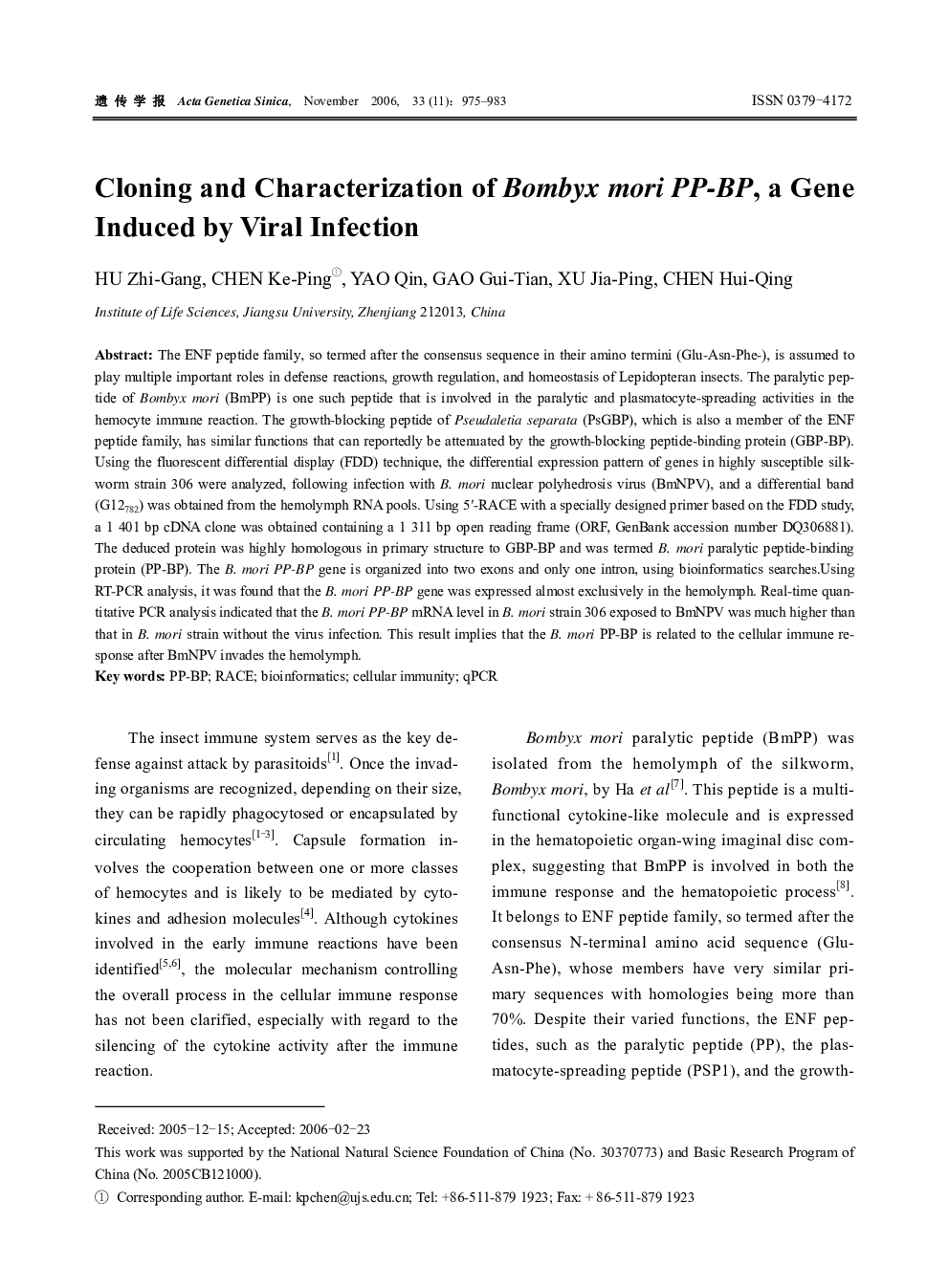| Article ID | Journal | Published Year | Pages | File Type |
|---|---|---|---|---|
| 2811212 | Acta Genetica Sinica | 2006 | 9 Pages |
The ENF peptide family, so termed after the consensus sequence in their amino termini (Glu-Asn-Phe-), is assumed to play multiple important roles in defense reactions, growth regulation, and homeostasis of Lepidopteran insects. The paralytic peptide of Bombyx mori (BmPP) is one such peptide that is involved in the paralytic and plasmatocyte-spreading activities in the hemocyte immune reaction. The growth-blocking peptide of Pseudaletia separata (PsGBP), which is also a member of the ENF peptide family, has similar functions that can reportedly be attenuated by the growth-blocking peptide-binding protein (GBP-BP). Using the fluorescent differential display (FDD) technique, the differential expression pattern of genes in highly susceptible silkworm strain 306 were analyzed, following infection with B. mori nuclear polyhedrosis virus (BmNPV), and a differential band (G12782) was obtained from the hemolymph RNA pools. Using 5′-RACE with a specially designed primer based on the FDD study, a 1 401 bp cDNA clone was obtained containing a 1 311 bp open reading frame (ORF, GenBank accession number DQ306881). The deduced protein was highly homologous in primary structure to GBP-BP and was termed B. mori paralytic peptide-binding protein (PP-BP). The B. mori PP-BP gene is organized into two exons and only one intron, using bioinformatics searches.Using RT-PCR analysis, it was found that the B. mori PP-BP gene was expressed almost exclusively in the hemolymph. Real-time quantitative PCR analysis indicated that the B. mori PP-BP mRNA level in B. mori strain 306 exposed to BmNPV was much higher than that in B. mori strain without the virus infection. This result implies that the B. mori PP-BP is related to the cellular immune response after BmNPV invades the hemolymph.
